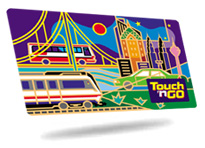
Banks have been able to move currency electronically for decades, only recently that the average consumer had the capability to use electronic transfers in any meaningful way. With the advancement in technology and more computer savvy individuals, global interaction is made available at vastly reduced costs. The Internet and E-commerce have become an increasingly commercial area, where daily payments are rendered for goods, information, services and investment. As a result, electronic payments are becoming the central part to online business between customer and seller.
Electronic money refers to digital currency that you can use on the Internet to buy and sell goods, services and investments by transmitting a number from one computer to another, where it typically involves use of computer networks, the Internet and digital stored value system. These transactions are carried out electronically, transferring funds from one party to another, by either a debit or credit. These funds are instantly cleared and secured by using strong encryption, thus eliminating the payment risk to the consumer.
One major type of Electronic money is the Integrated Circuit Card (ICC). ICC could be broken down further into 2 types - Contact ICC and Contactless ICC.
Contact ICC
Contact smart cards have a contact area, comprising several gold-plated contact pads, that is about 1 cm square. When inserted into a reader,
the chip makes contact with electrical connectors that can read information from the chip and write information back. The cards do not contain batteries; energy is supplied by the card reader.
Examples of Contact ICC's:
- Credit cards
- Malaysian MyKad
- ATM cards
Contactless ICC
The chip communicates with the card reader through Radio Frequency Identification (RFID) induction technology (at data rates of 106 to 848 kbit/s). These cards require only close proximity to an antenna to complete transaction. They are often used when transactions must be processed quickly or hands-free, such as on mass transit systems, where smart cards can be used without even removing them from a wallet.
Examples of Contactless ICC's:
- Hong Kong's Octopus Card
- Malaysia's Touch n Go Card
- San Diego's Compass Card
 Advantages of E-Currency
Advantages of E-Currency
FlexibilityThere is no need, for example, to carry several cards: one card can simultaneously be an ID, a credit card, a stored-value cash card, and a repository of personal information such as telephone numbers or medical history. Such a card can be easily replaced if lost, and, because a PIN number (or other form of security) must be used to access information, is totally useless to people other than its legal bearer. At the first attempt to use it illegally, the card would be deactivated by the card reader itself.
SecurityThey are encryption devices, so that the user can encrypt and decrypt information without relying on unknown, and therefore potentially untrustworthy, appliances such as ATMs. ICC's are very flexible in providing authentication at different level of the bearer and the counterpart. Finally, with the information about the user that ICC's can provide to the other parties, they are useful devices for customizing products and services.
Other general benefits of sICC's are:
- Portability
- Increasing data storage capacity
- Reliability that is virtually unaffected by electrical and magnetic fields.
Limitations of ICC's
SecurityVISA and MasterCard developed a new standard, SET, in early 1996 in an attempt to get the entire industry on a standard of encryption. Additionally, there are standards such as DES which have been around for years, usable in all forms of encryption which are being used in ICC's. But still some ICC's are not inviolate. Mondex, a maker of banking ICC's, solves this problem by making its transactions possible only between Mondex cards. But in order for ICC's to reach their full potential, they must be able to interact with a host of interfaces. And they must do so securely.
Public PerceptionPeople must believe that the cards are secure. This depends to a great extent upon actual security, but people must also be convinced of it. And once people are comfortable that the card is secure, they must still be confident that a stalker isn't somewhere collecting and analyzing all of the information gleaned from the ICC's use.
Product ComplementsWhile ICC's themselves are fairly cheap, card readers are not. However, in an effort to make ICC's more pervasive, companies such as Netscape and Microsoft are proposing putting software in packages they make. Additionally, Gemplus has created a new pocket reader and other companies are considering adding readers to keyboards.











